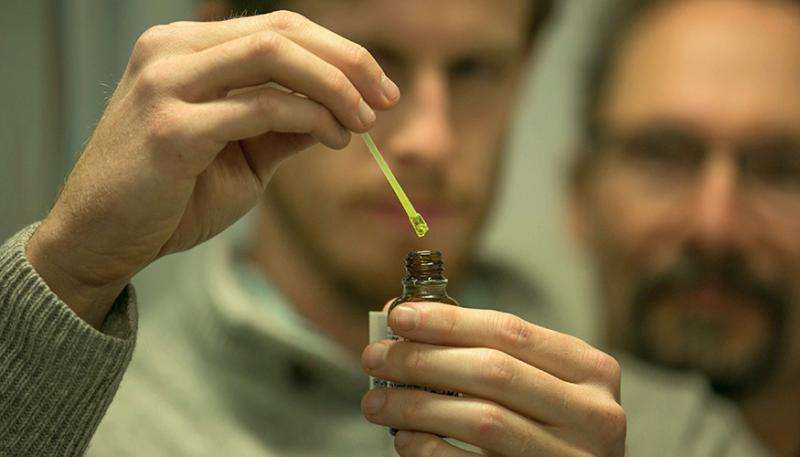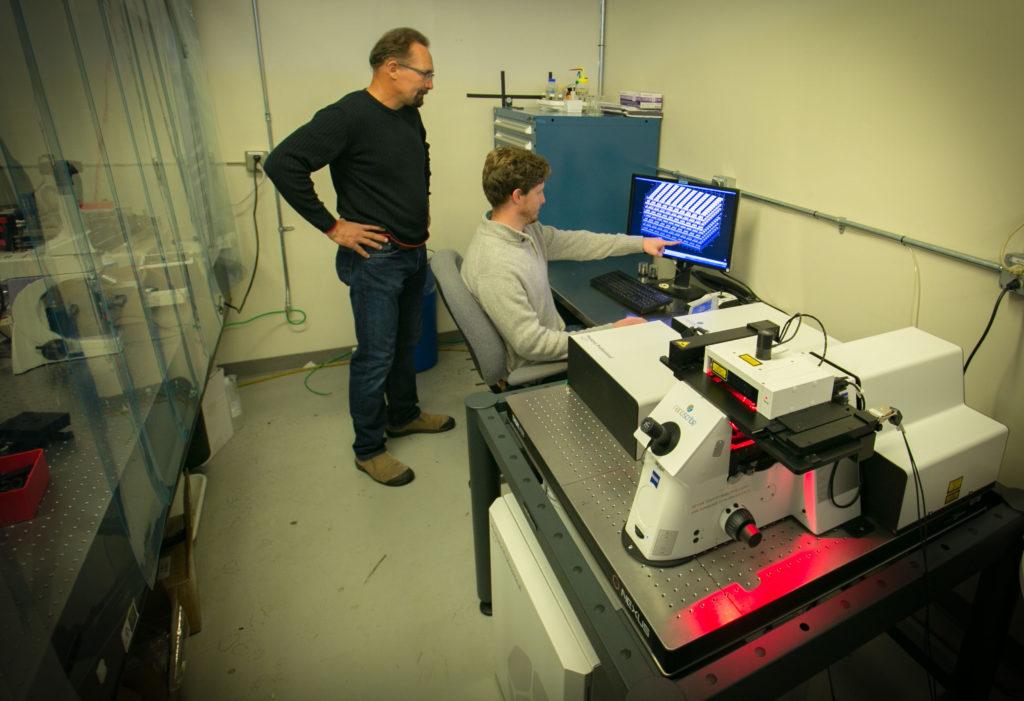 A lot of the science behind 3D printing is intensive study of material properties, especially when it comes to industrial additive manufacturing. Some of the most advanced research of materials for 3D printing is being carried out at Lawrence Livermore National Laboratory (LLNL) in Livermore, California. We’ve covered much of their groundbreaking research, including studies on the strength of 3D printed lattices, the flaws in metal additive manufacturing materials, and the development of graphene inks, just to name a few.
A lot of the science behind 3D printing is intensive study of material properties, especially when it comes to industrial additive manufacturing. Some of the most advanced research of materials for 3D printing is being carried out at Lawrence Livermore National Laboratory (LLNL) in Livermore, California. We’ve covered much of their groundbreaking research, including studies on the strength of 3D printed lattices, the flaws in metal additive manufacturing materials, and the development of graphene inks, just to name a few.
In the laboratory’s latest study, a team of researchers led by Juergen Biener is studying the use of 3D printing for the production of targets to be used for testing material strength under extreme conditions. Using an additive manufacturing process known as two-photon polymerization direct laser writing, the team has produced millimeter-sized, low density foam reservoir targets with nanoscale features. Designed for material strength testing at the OMEGA laser in Rochester, New York, the targets are the first precision macroscopic parts to be fabricated with two-photon polymerization direct laser writing technology.
The same technology has begun to be implemented at the National Ignition Facility to improve the performance of targets. As in other areas, 3D printing the targets has allowed for faster production; the polymer foam components can now be created in hours instead of weeks. The researchers have a lot more control over the process, too, which means more flexibility: the material’s properties, such as density, brittleness, and elasticity, can be much more easily changed.
“When something in target fabrication goes wrong, it could take us two months to replace it,” Biener said. “Now we can do it the next day or even overnight. The advantage is a shortcut in the time it takes to develop a new target component from conception to delivery. It opens the door to making things you couldn’t make before using traditional manufacturing.”
Using high-powered lasers such as the OMEGA or NIF lasers is an effective way to evaluate the behavior of materials under intense pressure. According to Biener, two-photon polymerization direct laser writing technology also offers the benefit of mass production, allowing the creation of material libraries that each contain hundreds of varying materials for experiments. According to Michael Stadermann, LLNL Targets S&T group leader, the ability of 3D printing to produce parts on demand could be a major benefit in terms of shortening lead times on future experimental procedures – and that’s not the technology’s only appeal to researchers like himself.
“It’s easier to control what you’re testing, and you don’t have to do any machining after,” Stadermann said. “Being able to write something in the final shape you want is a real advantage, especially since many of the materials cannot be machined.”
Although not all materials can be used as inks, the benefits of the technology are still too great to ignore, Stadermann said. Even if the cost benefits are not apparent now, the flexibility and control that 3D printing offers is enough to make researchers very interested in the continued use of the technology for material testing purposes. Discuss in the LLNL Materials forum at 3DPB.com.
[Source: LLNL / Photos: Julie Russell/LLNL]Subscribe to Our Email Newsletter
Stay up-to-date on all the latest news from the 3D printing industry and receive information and offers from third party vendors.
Print Services
Upload your 3D Models and get them printed quickly and efficiently.
You May Also Like
Consolidation in AM: How 2025 Is Shaping the Industry’s New Normal
The first half of 2025 has been marked by a clear shift in the additive manufacturing (AM) industry. Companies are no longer just focused on developing new tech by themselves....
Etsy Design Rule Change Reduces Selection of 3D Printed Goods
Online marketplace Etsy has implemented a rule change requiring all 3D printed goods on the site to be original designs. The update to the site’s Creativity Standards states, ¨Items produced using...
U.S. Congress Calls Out 3D Printing in Proposal for Commercial Reserve Manufacturing Network
Last week, the U.S. House of Representatives’ Appropriations Committee moved the FY 2026 defense bill forward to the House floor. Included in the legislation is a $131 million proposal for...
Transforming From Tourist to Native: Duro CEO Michael Corr Explains Why the Company Rebuilt its PLM Software on AI
In these early innings of the AI boom, many market analysts have expressed concern that AI spend has gotten too far ahead of the technology’s proven ability to deliver significant...


































